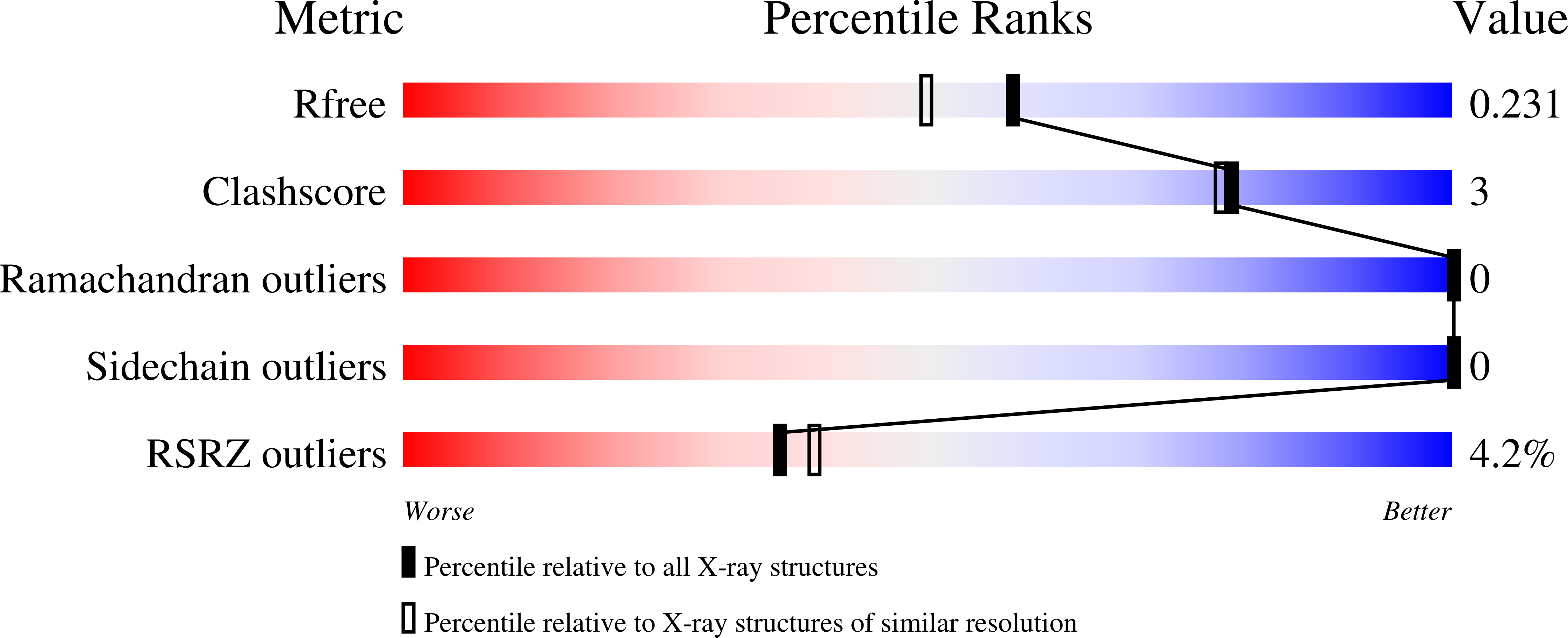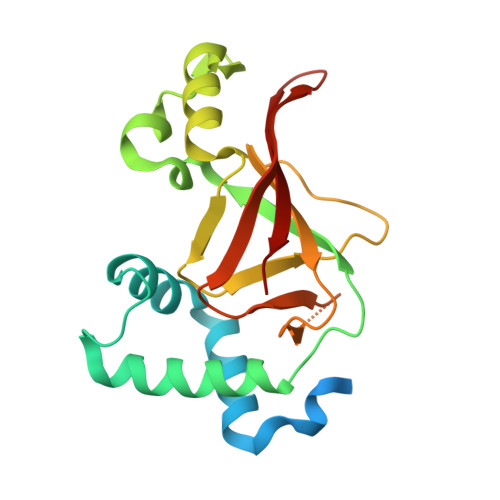Structural variability of C3larvin toxin. Intrinsic dynamics of the alpha / beta fold of the C3-like group of mono-ADP-ribosyltransferase toxins.
Lugo, M.R., Ravulapalli, R., Dutta, D., Merrill, A.R.(2016) J Biomol Struct Dyn 34: 2537-2560
- PubMed: 26610041
- DOI: https://doi.org/10.1080/07391102.2015.1123189
- Primary Citation of Related Structures:
5DZQ - PubMed Abstract:
C3larvin toxin is a new member of the C3 class of the mono-ADP-ribosyltransferase toxin family. The C3 toxins are known to covalently modify small G-proteins, e.g. RhoA, impairing their function, and serving as virulence factors for an offending pathogen. A full-length X-ray structure of C3larvin (2.3 Å) revealed that the characteristic mixed α/β fold consists of a central β-core flanked by two helical regions. Topologically, the protein can be separated into N and C lobes, each formed by a β-sheet and an α-motif, and connected by exposed loops involved in the recognition, binding, and catalysis of the toxin/enzyme, i.e. the ADP-ribosylation turn-turn and phosphate-nicotinamide PN loops. Herein, we provide two new C3larvin X-ray structures and present a systematic study of the toxin dynamics by first analyzing the experimental variability of the X-ray data-set followed by contrasting those results with theoretical predictions based on Elastic Network Models (GNM and ANM). We identify residues that participate in the stability of the N-lobe, putative hinges at loop residues, and energy-favored deformation vectors compatible with conformational changes of the key loops and 3D-subdomains (N/C-lobes), among the X-ray structures. We analyze a larger ensemble of known C3bot1 conformations and conclude that the characteristic 'crab-claw' movement may be driven by the main intrinsic modes of motion. Finally, via computational simulations, we identify harmonic and anharmonic fluctuations that might define the C3larvin 'native state.' Implications for docking protocols are derived.
Organizational Affiliation:
a Department of Molecular and Cell Biology , University of Guelph , Science Complex, Guelph , ON N1G2W1 , Canada.
















